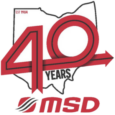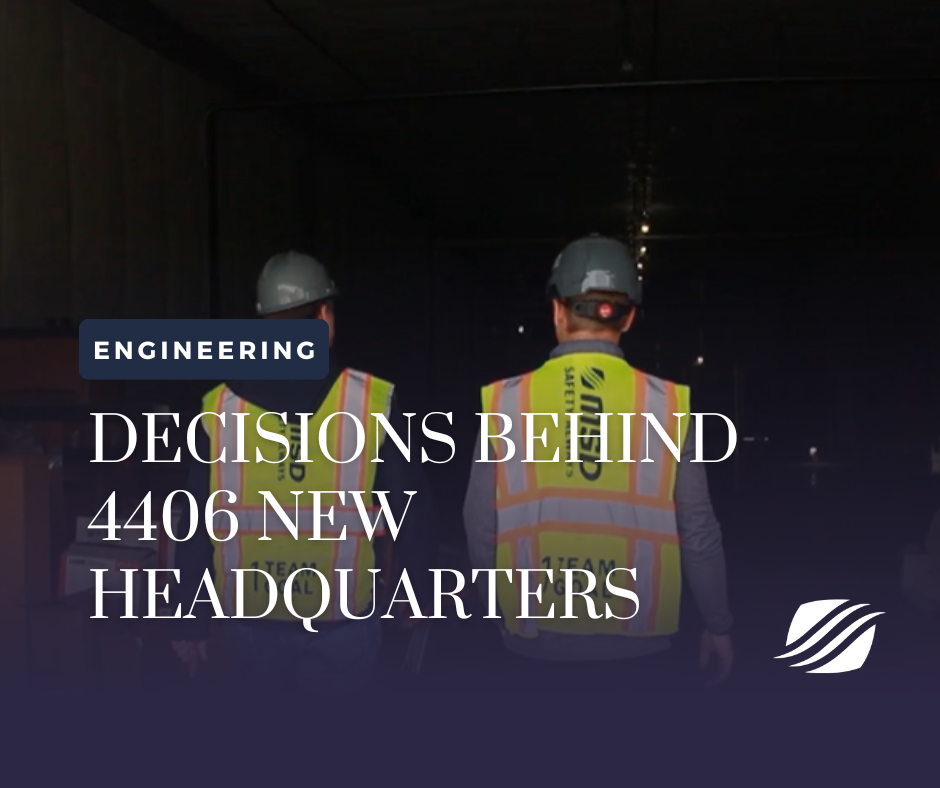Designing Our Future: A Look Inside the Engineering Decisions Behind MSD’s New Building
At MSD, we’re always looking ahead — not just for our clients, but for our own team. In a recent video walkthrough, engineers Austin Freuh and Ben Ambos shared an inside look at the thoughtful design process behind our newest office expansion and what it’s like to design a space you’ll actually be working in.
Engineering a Smart HVAC System
When designing the HVAC system for the new MSD building, one of the biggest challenges was accounting for the unique layout — a mix of open and closed spaces with teams positioned throughout. The solution? A Variable Refrigerant Flow (VRF) system.
“VRF allows for simultaneous heating and cooling throughout the building,” Austin explained. “It gives us the flexibility to efficiently serve different zones.”
This flexibility is crucial in a modern workspace, especially one with varying room types and constantly shifting team needs. Plus, VRF systems are known for their energy efficiency — an important value for us at MSD as we continue prioritizing sustainable building practices.
Leveraging Technology in Real-Time
Beyond the system design itself, the team also utilized cutting-edge tools like virtual construction walk-throughs using OpenSpace — think Google Street View for your jobsite. This allowed them to visually compare the Revit model directly against in-progress installation. This also allows us to look back on
“You could actually see the ductwork and piping from our model side-by-side with what was happening onsite,” Ben said. “It was a really cool way to catch potential issues early and keep improving how we build.”
This proactive, tech-forward approach not only helped reduce delays but ensured the final outcome matched the design intent with precision.
The Unique Experience of Designing Your Own Office
One particularly special aspect of this project? Knowing that they’d soon be working in the very space they helped design.
“Most of the time, once we finish a project, we don’t see it again for years,” Ben shared. “But now we’ll walk by the systems we designed every day.”
With exposed ceilings and open layouts, the engineering team knew their work would literally be on display — every line, every decision, visible day in and day out. It made the process both personal and high stakes.
Collaboration at Its Best
The proximity of the new building made it easy for the team to stay involved in day-to-day decisions and problem-solving. That closeness fostered a unique level of collaboration between the engineers and field teams, allowing for faster feedback and thoughtful adjustments throughout the process.
Austin noted how meaningful it was to see how many small decisions shape a space — and how much the project team genuinely cared about the end-user experience. “It was cool to hear feedback, go back and forth, and see how much they actually cared about what we wanted in the space.”
A Shared Accomplishment
In wrapping up, both engineers expressed their appreciation for everyone involved — from the field teams to the office staff.
“It’s been incredible to watch this come together,” Austin said. “The quality of work, the care everyone has put in — it shows.”
This project is more than just a building. It’s a reflection of our values, our teamwork, and the future we’re building — together.



